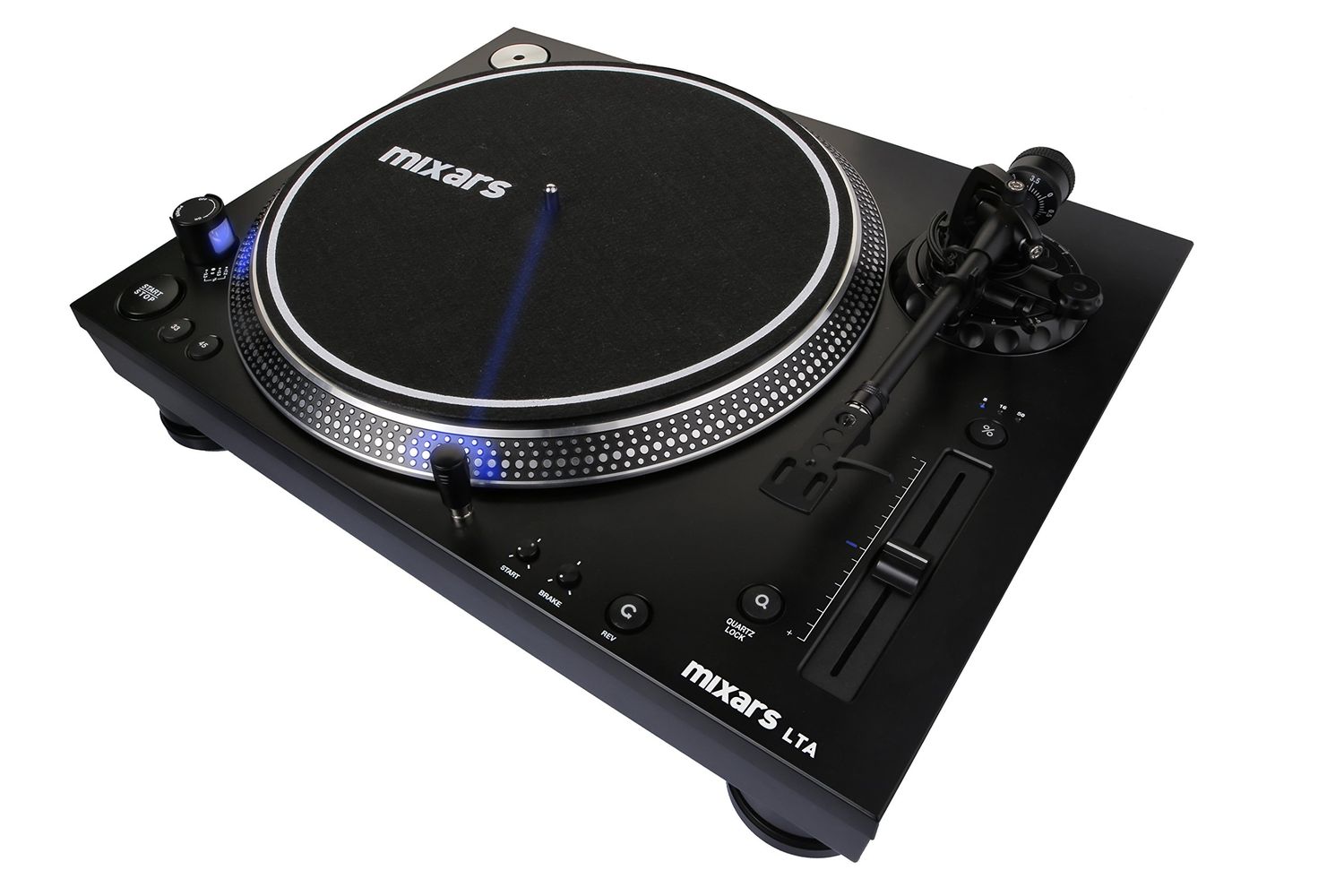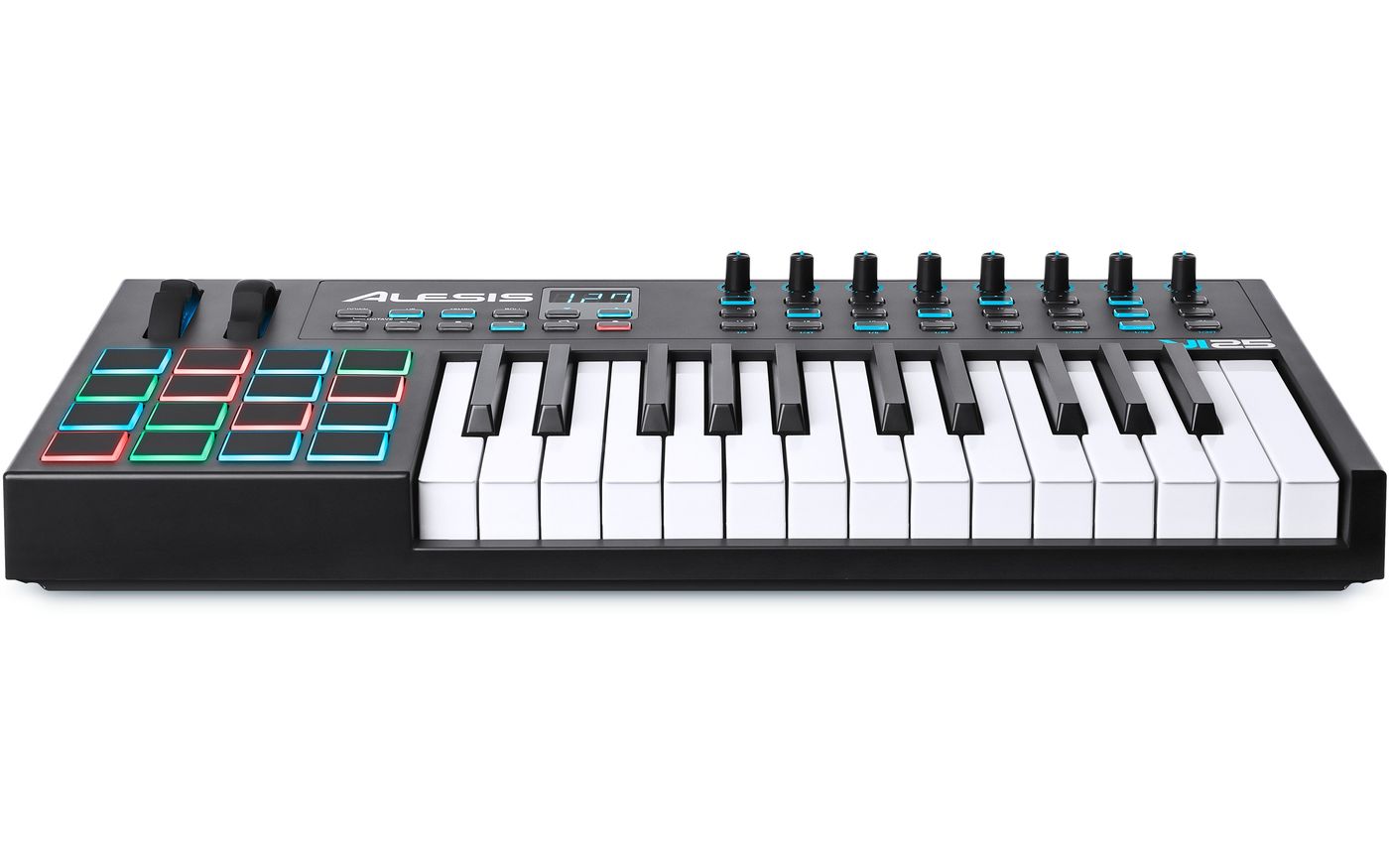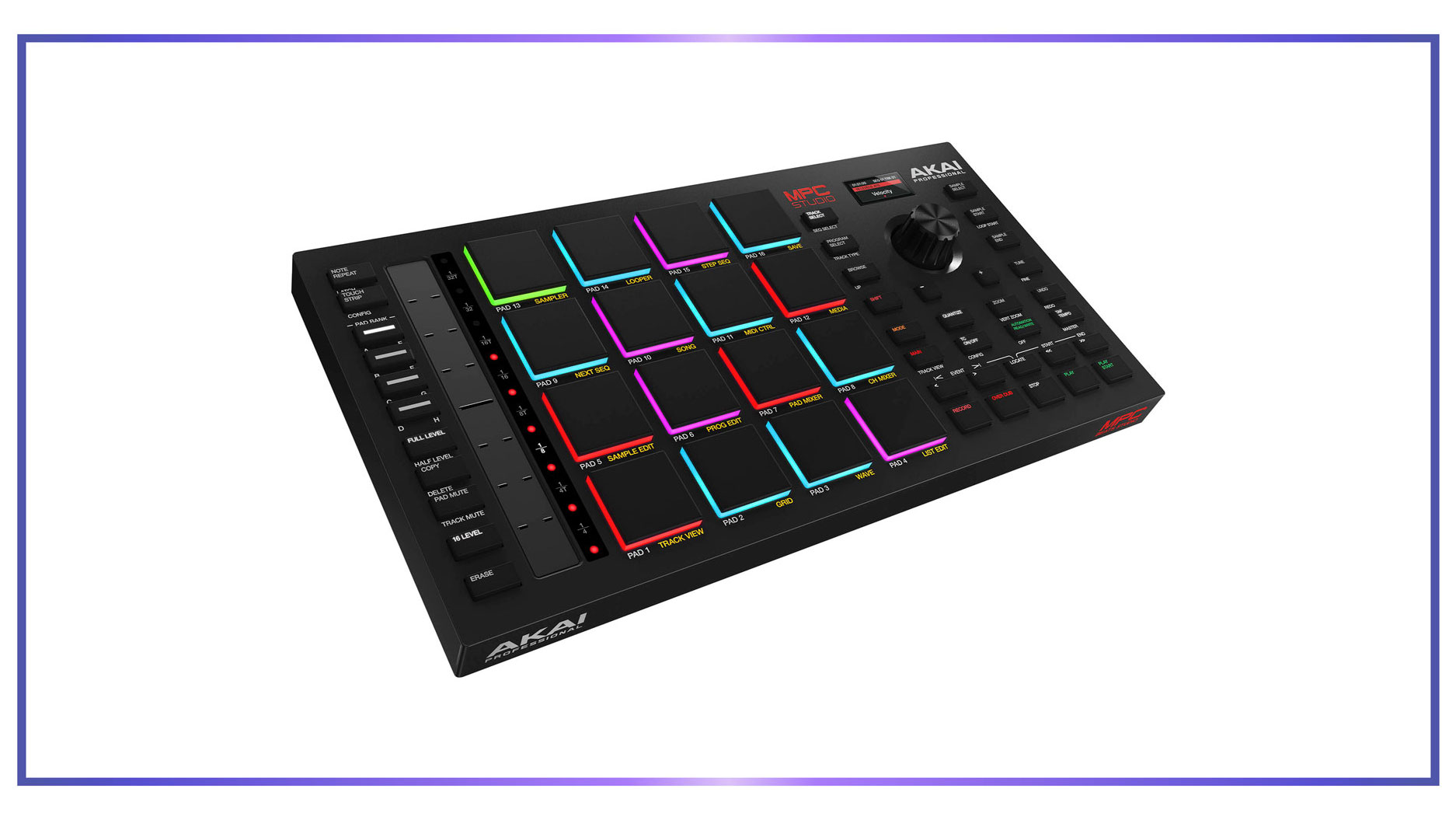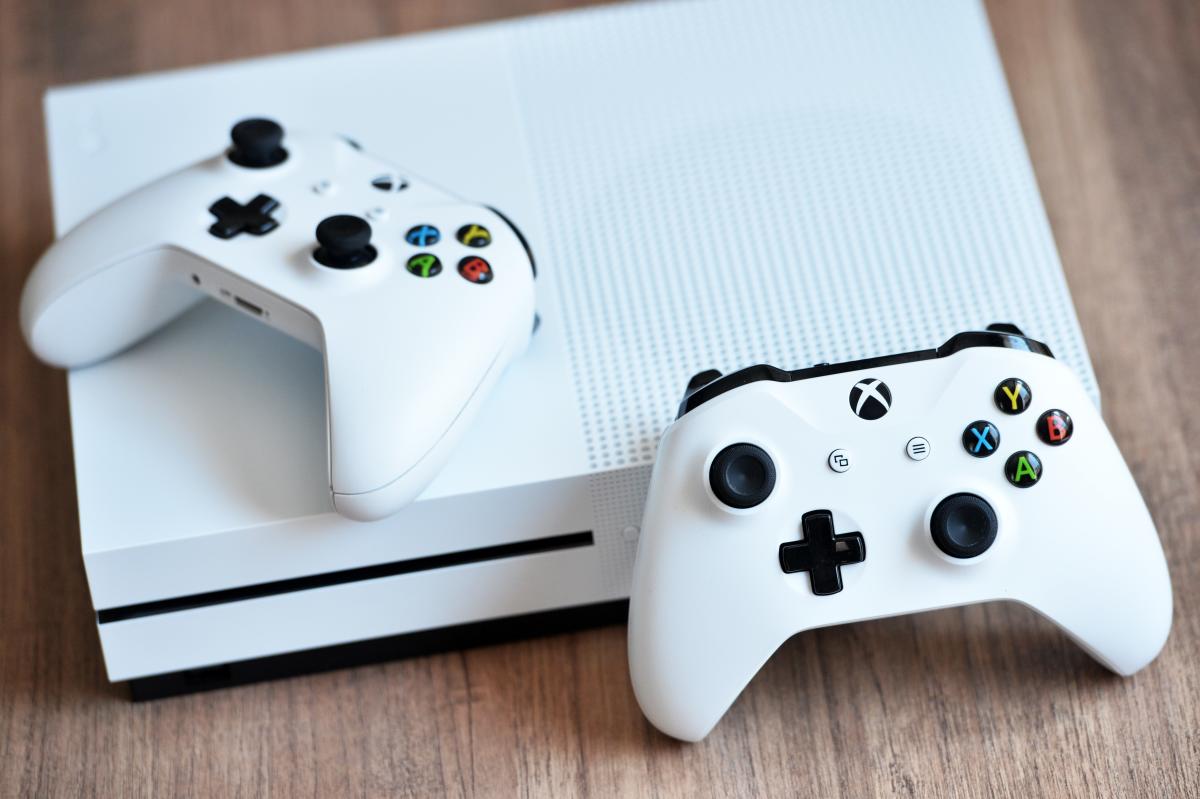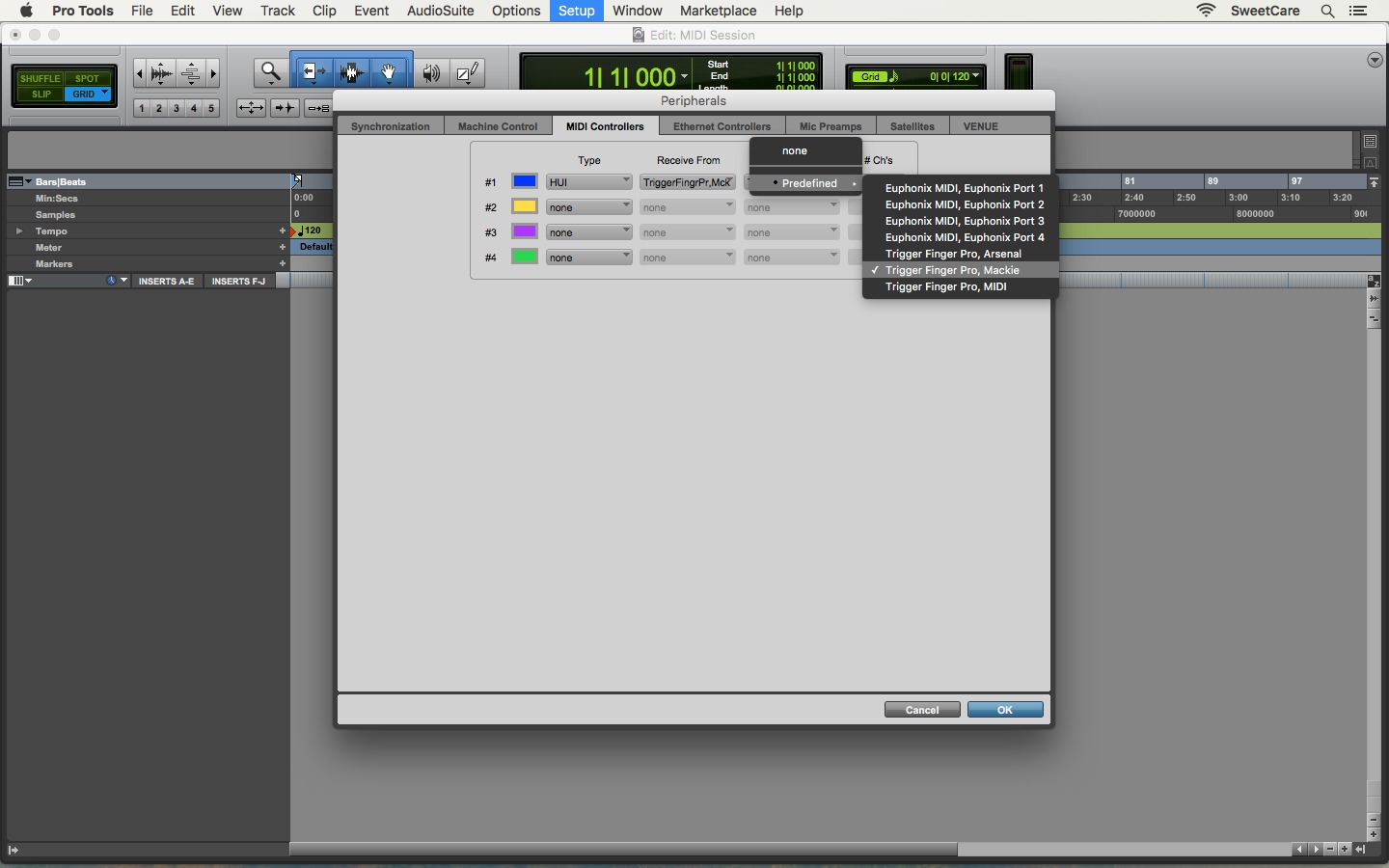Home>Production & Technology>DJ>How To Scratch On DJ Controller
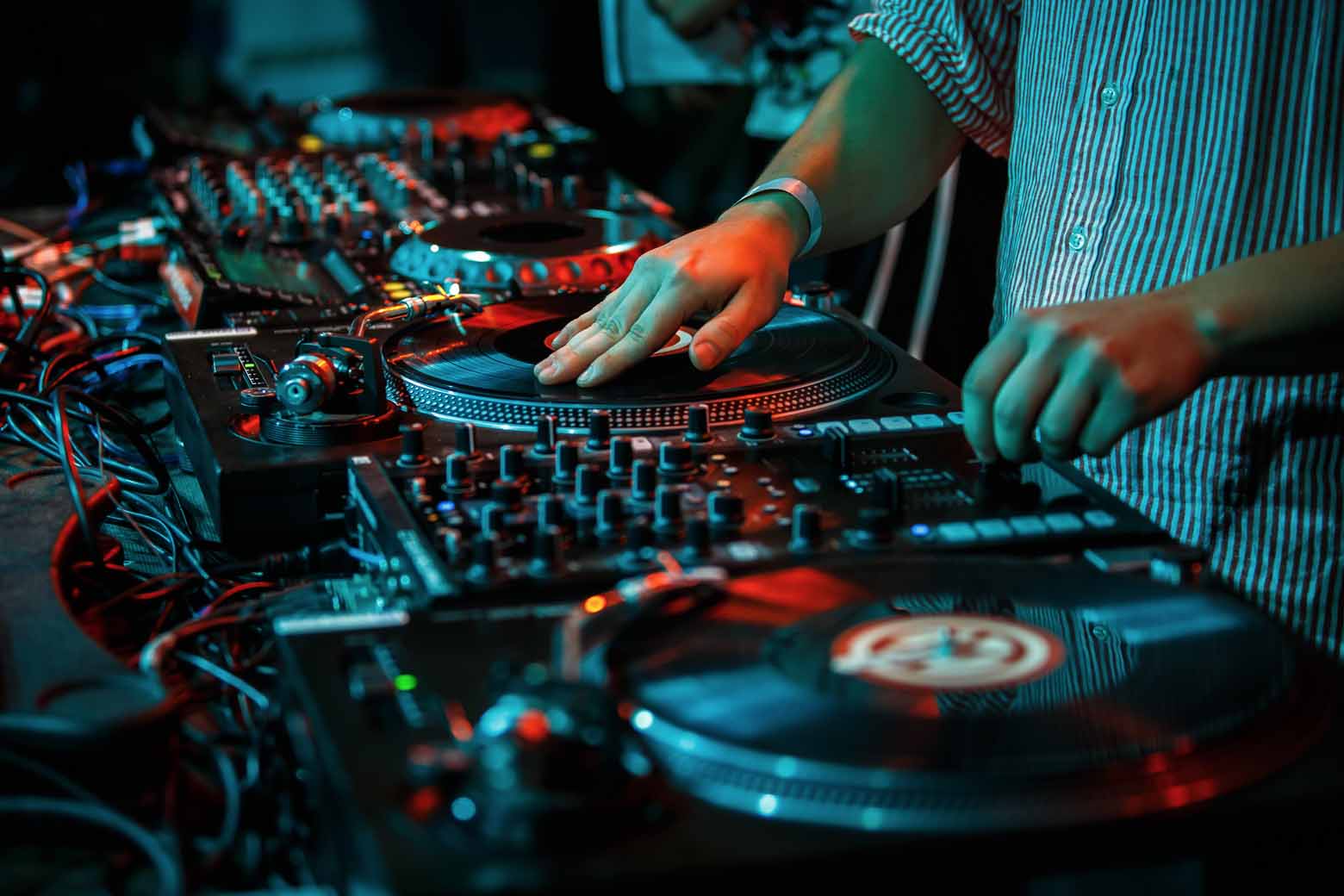

DJ
How To Scratch On DJ Controller
Published: March 4, 2024
Learn how to scratch on a DJ controller with our step-by-step guide. Master the art of DJing and elevate your skills in no time.
(Many of the links in this article redirect to a specific reviewed product. Your purchase of these products through affiliate links helps to generate commission for AudioLover.com, at no extra cost. Learn more)
Table of Contents
Introduction
Scratching is an art form that has become synonymous with DJing, adding a dynamic and expressive element to live performances and studio recordings. Whether you're a beginner or a seasoned DJ looking to hone your scratching skills, mastering this technique can elevate your sets and captivate audiences. In this comprehensive guide, we'll delve into the fundamentals of scratching on a DJ controller, covering everything from setting up your equipment to practicing various scratching techniques. By the end of this article, you'll be equipped with the knowledge and tools to unleash your creativity and finesse on the decks.
Scratching, at its core, involves manipulating a record or digital audio file to produce rhythmic and percussive sounds. It's a blend of technical precision, rhythm, and creativity, allowing DJs to add their unique flair to tracks and create seamless transitions between songs. The evolution of DJing technology has made scratching more accessible than ever, with DJ controllers offering a versatile platform for experimenting with different scratching styles.
Whether you're drawn to the classic sounds of old-school hip-hop or the innovative techniques of modern electronic music, scratching provides an avenue for self-expression and musical innovation. It's a skill that transcends genres, allowing DJs to inject personality and energy into their performances. As you embark on your journey to master the art of scratching, remember that it's not just about executing flawless techniques; it's about infusing each scratch with emotion and storytelling.
In the following sections, we'll explore the foundational principles of scratching, guide you through the setup process for your DJ controller, and provide valuable tips for refining your scratching skills. Additionally, we'll delve into various scratching techniques, offering insights into how you can elevate your performances and carve out your signature sound. Whether you're a bedroom DJ looking to impress your friends or a professional seeking to push the boundaries of your craft, this guide will equip you with the knowledge and inspiration to take your scratching to the next level. So, let's dive in and uncover the secrets of scratching on a DJ controller.
Understanding the Basics of Scratching
Scratching is a fundamental DJ technique that involves manipulating the playback of a sound to create rhythmic patterns, textures, and effects. At its essence, scratching is a form of percussive expression, allowing DJs to add their unique touch to music and engage audiences through dynamic performances. To grasp the art of scratching, it's essential to comprehend the foundational principles that underpin this technique.
The Origins of Scratching
Scratching traces its roots back to the early days of hip-hop culture, where DJs, armed with turntables and vinyl records, pioneered the art of manipulating sounds. The technique gained prominence in the 1970s and 1980s, as DJs such as Grandmaster Flash and Grand Wizzard Theodore pushed the boundaries of turntablism, demonstrating the expressive potential of scratching. Over the decades, scratching has evolved from a niche skill within hip-hop to a versatile tool embraced by DJs across various genres.
Understanding Turntable Anatomy
To master scratching, it's crucial to familiarize yourself with the components of a turntable or DJ controller. The key elements include the platter, tonearm, cartridge, and mixer. The platter serves as the rotating platform for the record, while the tonearm houses the cartridge, which reads the audio signal from the vinyl. The mixer allows DJs to blend and manipulate multiple audio sources, providing control over volume, EQ, and crossfading. Understanding the mechanics of these components is pivotal to executing precise and fluid scratching techniques.
Fundamental Scratching Movements
Scratching involves a combination of hand movements, timing, and precision. The basic scratch motion comprises the "baby scratch," a foundational technique for beginners. This involves moving the record back and forth under the needle while controlling the speed and pressure to produce distinct sounds. As you progress, you'll explore advanced scratching techniques such as the "transformer," "flare," and "crab," each requiring dexterity and finesse to execute seamlessly.
Musicality and Expression
Beyond technical proficiency, scratching is an art form that demands musicality and expression. DJs infuse scratches with rhythmic phrasing, syncopation, and dynamics to create compelling narratives within their performances. By understanding the musical structure of a track and interpreting it through scratching, DJs can craft evocative and engaging sonic experiences for their audiences.
In essence, understanding the basics of scratching entails delving into its historical significance, mastering turntable mechanics, grasping fundamental movements, and embracing the expressive potential of this technique. As we continue our exploration, we'll delve into the practical aspects of setting up your DJ controller for scratching, providing you with the foundation to unleash your creativity and finesse on the decks.
Setting Up Your DJ Controller for Scratching
Setting up your DJ controller for scratching is a crucial step in ensuring optimal performance and precision. Whether you're using a traditional turntable-style controller or a modern digital interface, the configuration process lays the groundwork for seamless scratching sessions. Here's a comprehensive guide to setting up your DJ controller for scratching:
1. Calibration and Adjustment
Before diving into scratching, it's essential to calibrate and adjust your DJ controller to suit your preferences and playing style. Start by ensuring that the platter or jog wheels have the appropriate tension and sensitivity. This step is vital for achieving precise control over the playback speed and direction, enabling you to execute intricate scratching techniques with ease.
2. Needle and Cartridge Alignment
If you're using a traditional turntable-style controller, aligning the needle and cartridge is critical for optimal tracking and sound reproduction. Proper alignment minimizes tracking errors and distortion, allowing for clean and consistent audio output during scratching. Familiarize yourself with the alignment process and make necessary adjustments to enhance the performance of your DJ controller.
3. Software and Firmware Updates
For digital DJ controllers, ensuring that your software and firmware are up to date is imperative. Manufacturers often release updates that address performance enhancements, bug fixes, and new features tailored for scratching and performance. By keeping your controller's software and firmware current, you can leverage the latest advancements and optimizations, elevating your scratching experience.
4. Customizing Control Mapping
Many modern DJ controllers offer customizable control mapping, allowing you to tailor the behavior of buttons, pads, and faders to suit your scratching preferences. Take advantage of control mapping features to assign specific functions to different elements of your controller, optimizing them for scratching maneuvers. This level of customization empowers you to create a personalized interface that aligns with your unique scratching techniques and creative vision.
5. Audio Interface Configuration
For DJ controllers with integrated audio interfaces, configuring the audio settings is paramount. Ensure that the audio interface is set to the appropriate sample rate, buffer size, and input/output routing to minimize latency and ensure responsive playback. Fine-tuning the audio interface settings enhances the real-time feedback and responsiveness crucial for executing intricate scratching patterns and transitions.
By meticulously setting up your DJ controller for scratching, you establish a solid foundation for exploring the boundless creative possibilities of this expressive technique. With a finely tuned and optimized setup, you can unleash your artistic vision and elevate your performances to new heights, captivating audiences with your mastery of scratching on a DJ controller.
Practicing Different Scratching Techniques
Mastering the art of scratching on a DJ controller involves immersing yourself in a diverse array of scratching techniques, each offering unique sonic possibilities and expressive potential. As you embark on this journey of exploration and refinement, it's essential to dedicate focused practice sessions to honing your skills and expanding your repertoire of scratching techniques. Here's a comprehensive look at various scratching techniques and how you can incorporate them into your practice regimen:
1. Baby Scratch
The baby scratch serves as the foundational building block for aspiring scratch DJs. It involves moving the record or jog wheel back and forth under the needle, producing a crisp and rhythmic sound. Practice executing the baby scratch with precision, focusing on maintaining consistent timing and control over the movement.
2. Transformer Scratch
Embraced for its staccato-like effect, the transformer scratch entails rapidly tapping the crossfader to create a distinct rhythmic pattern. This technique demands dexterity and swift hand movements, making it a captivating addition to your scratching repertoire. Dedicate time to perfecting the timing and fluidity of the transformer scratch, aiming for seamless transitions and dynamic variations.
3. Flare Scratch
The flare scratch is characterized by its intricate combination of fader movements and record manipulation, resulting in a complex and dynamic sound. Practice executing the flare scratch with meticulous attention to the coordination between your hands, striving for a seamless fusion of rhythmic patterns and tonal textures.
4. Crab Scratch
Renowned for its rapid and intricate hand movements, the crab scratch adds a layer of complexity to your scratching arsenal. By utilizing multiple fingers to manipulate the crossfader, you can produce rapid and expressive sequences that elevate your performances. Dedicate focused practice sessions to refining the agility and coordination required for executing the crab scratch with finesse.
5. Chirp Scratch
The chirp scratch combines forward and backward movements of the record or jog wheel with precise fader control, resulting in a sharp and vibrant sound. Explore the nuances of the chirp scratch, experimenting with variations in speed and intensity to infuse your performances with dynamic flair and rhythmic intricacy.
6. Stab Scratch
Characterized by its percussive and impactful nature, the stab scratch involves abruptly stopping the movement of the record or jog wheel to produce a punctuated sound. Delve into the art of executing the stab scratch with emphasis on timing and control, aiming to integrate it seamlessly into your scratching repertoire.
7. Orbit Scratch
The orbit scratch introduces circular hand movements, creating a swirling and hypnotic effect. Practice mastering the fluidity and precision of the orbit scratch, experimenting with different speeds and directions to imbue your performances with a captivating and mesmerizing quality.
By dedicating focused practice sessions to these diverse scratching techniques, you'll not only expand your technical proficiency but also cultivate a rich and dynamic sonic palette. Embrace the creative possibilities offered by each technique, infusing your performances with a blend of rhythmic innovation and expressive storytelling. As you continue to refine your skills and explore new avenues of artistic expression, the world of scratching on a DJ controller becomes a boundless realm of sonic exploration and creative fulfillment.
Tips for Improving Your Scratching Skills
-
Consistent Practice: Dedicate regular practice sessions to honing your scratching skills, focusing on precision, timing, and fluidity. Repetition is key to mastering intricate techniques and developing muscle memory for seamless execution.
-
Explore Various Genres: Expand your musical repertoire by exploring diverse genres and styles, as each genre presents unique rhythmic patterns and sonic characteristics. Experimenting with different musical contexts can inspire fresh approaches to scratching and enhance your versatility as a DJ.
-
Record and Analyze Your Sessions: Record your scratching sessions and critically analyze your performance. Pay attention to nuances such as timing, tonal variations, and transitions between techniques. Identifying areas for improvement through self-analysis can accelerate your progress.
-
Collaborate with Other DJs: Collaborating with fellow DJs provides valuable opportunities for sharing techniques, receiving constructive feedback, and gaining insights into different scratching styles. Engaging in collaborative sessions can foster a supportive community and expose you to new perspectives on scratching.
-
Embrace Creativity: Infuse your scratching with creativity and experimentation. Don't be afraid to push boundaries, incorporate unconventional sounds, and develop your signature style. Embracing creativity fosters innovation and sets you apart as a distinctive and dynamic performer.
-
Focus on Musicality: Develop a deep understanding of the musical compositions you scratch over. Pay attention to song structures, rhythm patterns, and melodic elements, allowing you to craft scratches that complement and enhance the underlying music. A keen sense of musicality elevates your scratching from technical prowess to expressive artistry.
-
Seek Inspiration from Diverse Sources: Draw inspiration from a wide range of sources, including other DJs, musicians, visual art, and everyday sounds. Inspiration can spark fresh ideas and perspectives, fueling your creative journey and broadening your sonic palette.
-
Stay Patient and Persistent: Progress in scratching takes time and dedication. Stay patient and persistent, embracing the learning process and celebrating incremental improvements. Consistent effort and resilience are fundamental to mastering the intricacies of scratching on a DJ controller.
-
Engage with Tutorials and Educational Resources: Leverage online tutorials, educational resources, and instructional videos to gain insights into advanced scratching techniques, industry trends, and historical perspectives. Continuous learning and exposure to diverse resources can enrich your skill set and deepen your appreciation for the art of scratching.
-
Perform Regularly: Seek opportunities to perform live, whether at local events, virtual platforms, or social gatherings. Live performances provide invaluable experience, allowing you to adapt your scratching skills to different environments and engage with diverse audiences, ultimately refining your stage presence and improvisational abilities.
By integrating these tips into your practice regimen and embracing a holistic approach to skill development, you can embark on a transformative journey toward mastering the art of scratching on a DJ controller. Each tip serves as a stepping stone toward unlocking your full creative potential and elevating your performances to captivating and innovative heights.
Conclusion
In conclusion, the art of scratching on a DJ controller is a dynamic and multifaceted pursuit that transcends technical proficiency, delving into the realms of creativity, musicality, and self-expression. Throughout this comprehensive guide, we've explored the foundational principles of scratching, delved into the intricacies of setting up a DJ controller for optimal scratching performance, and ventured into the diverse landscape of scratching techniques. As we draw this journey to a close, it's essential to reflect on the transformative potential of mastering the art of scratching.
Scratching, at its core, is a testament to the fusion of tradition and innovation within the DJing landscape. From its humble origins in the pioneering days of hip-hop to its integration into contemporary electronic music, scratching has evolved into a versatile and indispensable tool for DJs across genres. It serves as a conduit for storytelling, rhythmic innovation, and sonic experimentation, allowing DJs to leave an indelible mark on their performances and engage audiences on a profound level.
The journey of mastering scratching on a DJ controller is not merely a technical pursuit; it's a deeply personal and artistic endeavor. It demands dedication, resilience, and an unwavering commitment to self-improvement. Aspiring scratch DJs are encouraged to embrace a holistic approach, integrating consistent practice, musical exploration, and creative innovation into their journey. By doing so, they can transcend the confines of technical proficiency and elevate their scratching to a form of expressive artistry.
Moreover, the art of scratching thrives within a community of collaboration, mentorship, and mutual inspiration. Aspiring scratch DJs are encouraged to seek guidance from seasoned practitioners, engage in collaborative sessions, and contribute to a vibrant and supportive community. Through these interactions, they can glean insights, exchange techniques, and foster a culture of continuous learning and growth within the realm of scratching.
Ultimately, the pursuit of mastering scratching on a DJ controller is a transformative odyssey, one that unfolds through dedicated practice, boundless creativity, and an unwavering passion for musical innovation. Aspiring scratch DJs are poised to embark on a journey of self-discovery, artistic exploration, and sonic evolution, shaping their unique identities as performers and leaving an enduring imprint on the ever-evolving tapestry of DJ culture.
In essence, the art of scratching on a DJ controller transcends technical proficiency, evolving into a form of expressive storytelling and sonic innovation. Aspiring scratch DJs are poised to embark on a transformative journey, one that encompasses dedication, creativity, and an unwavering commitment to musical excellence. Through this journey, they can carve out their distinct artistic identities and contribute to the rich tapestry of DJ culture.



